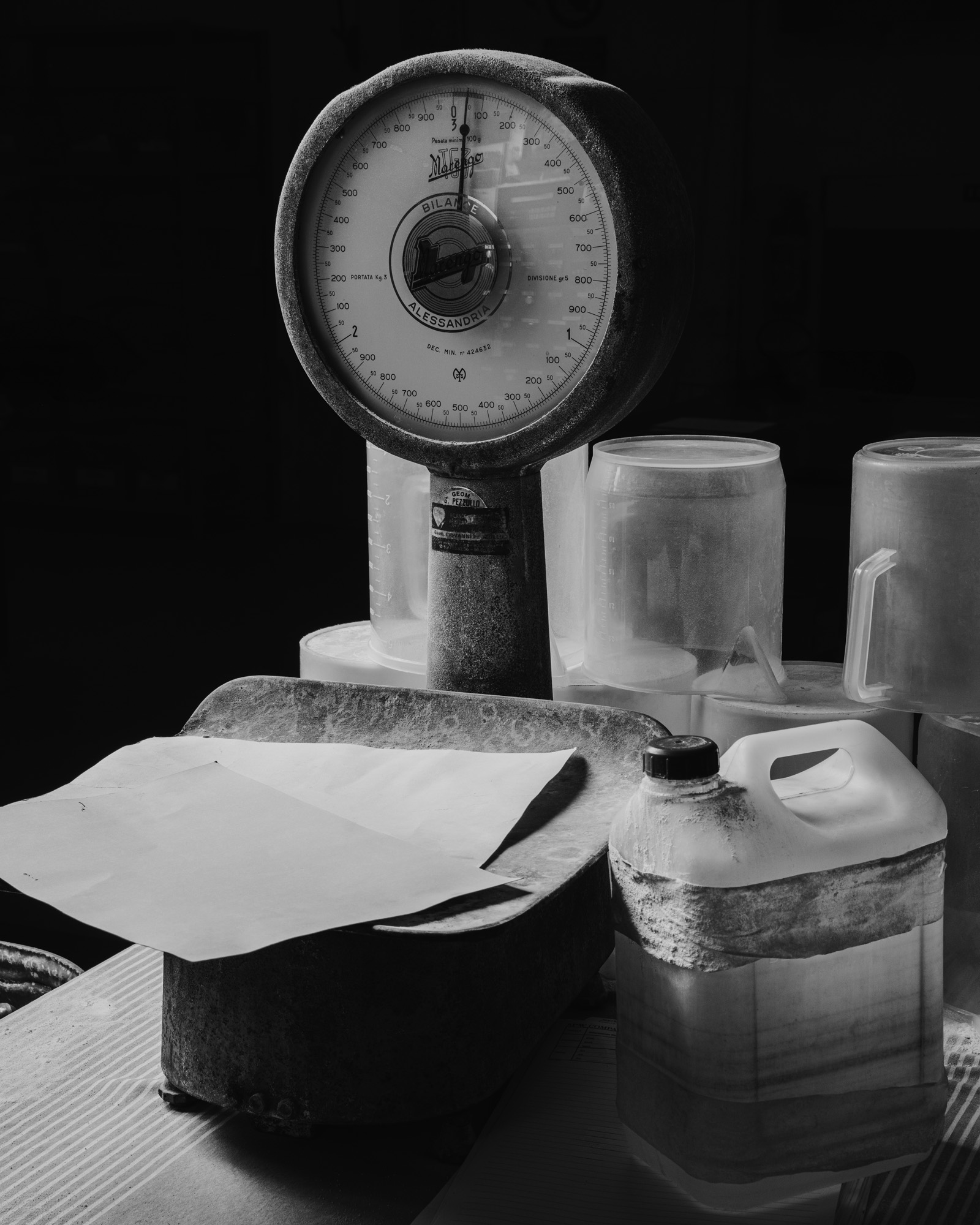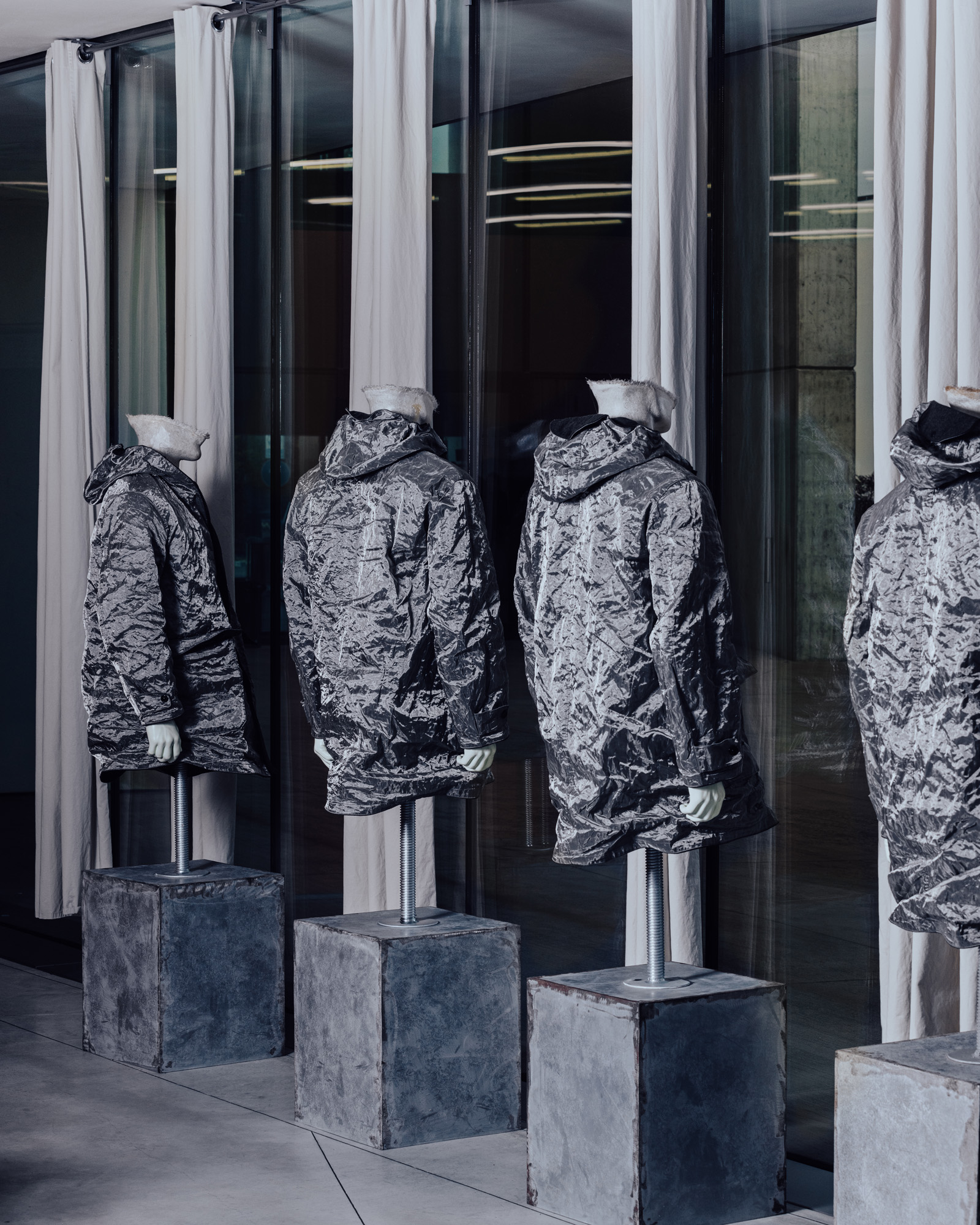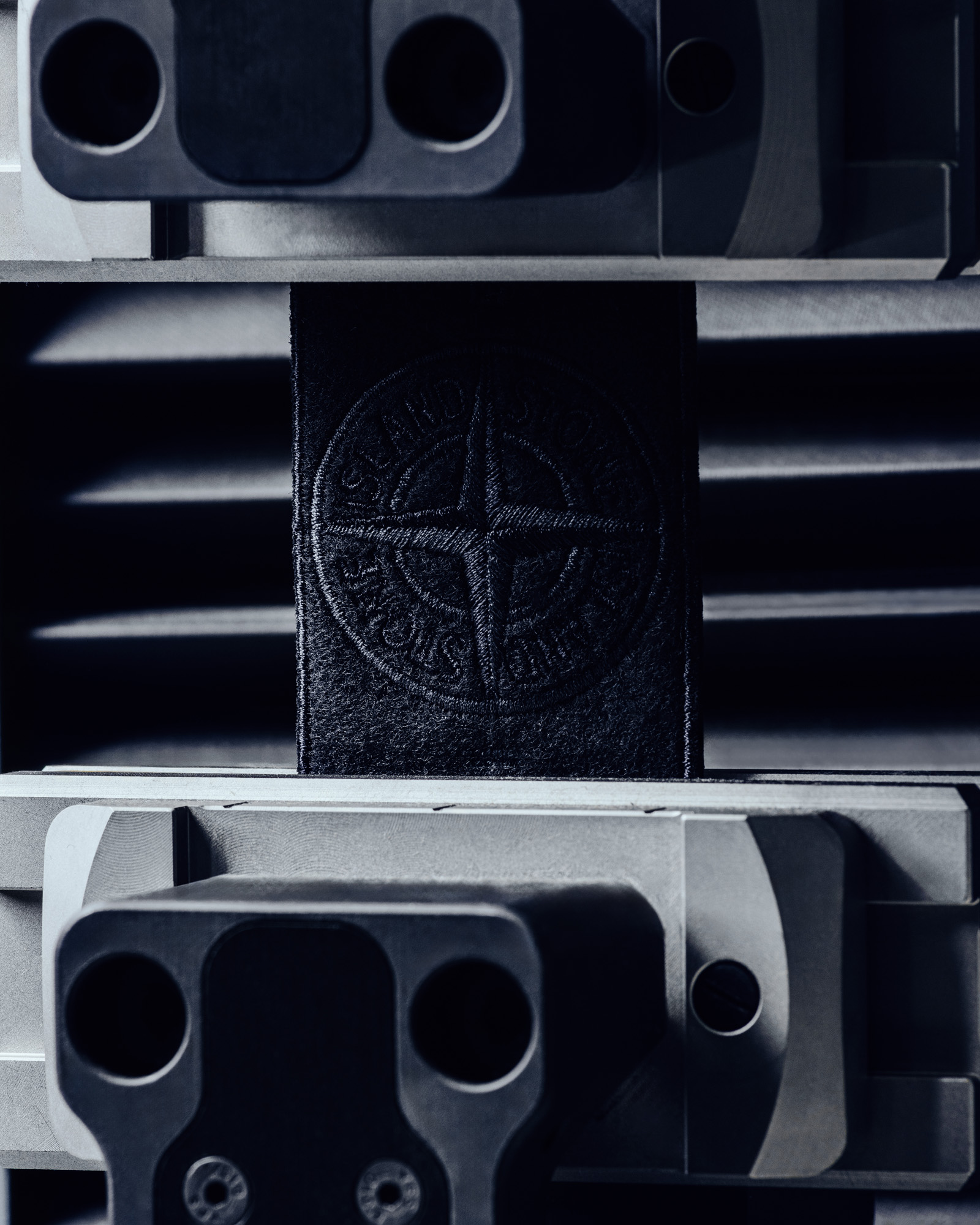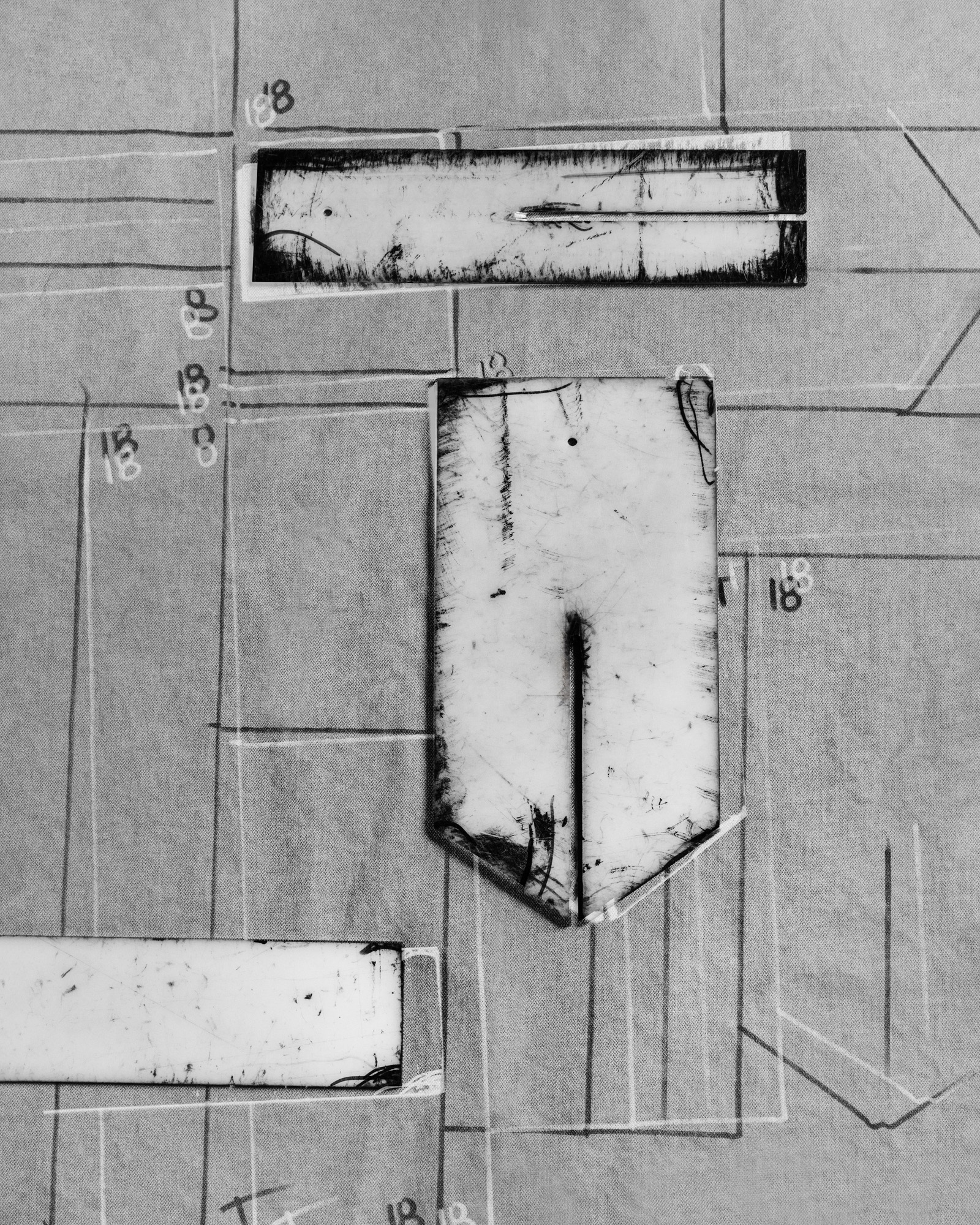
Since we’re in Italy, let’s start in the kitchen. This particular kitchen has around 60,000 recipes, but rather than whipping up ragù, this is where Stone Island’s impressive range of fabric colours are cooked up. The brand might be best known for its badge, but its true essence lies in its material innovations, such as its dyeing processes.
‘The design team build a palette, then we give that to the colour team for them to start doing the recipe,’ says Sasha Kanevskyi, Stone Island’s design director, as we tour the brand’s HQ in Ravarino, Emilia-Romagna, first taking in the ‘tintoria’, an old warehouse full of dye drums, archaic-looking washing machines, Wonka-esque pipes and flasks of bright potions. The classic white lab coats come with the Stone Island signature: the brand’s compass on the upper arm.
Wallpaper* Design Awards 2025: Stone Island’s legacy of innovation

Kanevskyi has been at the label for three years and says he’s never worked anywhere like it – there are few places where designers can collaborate with an in-house team in creating colours and prototypes without the need for external factories. This has been the way of working since Bolognese graphic designer-turned-material pioneer Massimo Osti launched Stone Island in 1982.
The design team, which is based in Milan, comes over once a week to work with the highly skilled technicians across all the departments. Such are the complex properties of Stone Island products that every team is as essential as the other; the material affects the dye, the wash shrinks the material, the shrinkage affects the designs. ‘A lot of people contribute at the same time to the same target,’ says Kanevskyi. ‘There’s an interaction between the research and development department, the product, the designers, the dyeing process. There is not one separate department working on their own – everyone influences each other.’

‘Stone Island has become fashionable, but I don’t describe it as a fashion brand, because that is too superficial, too ephemeral. It’s product-first, functionality, research, innovation and materiality‘
Robert Triefus, Stone Island CEO
This process creates a buoyant team spirit at the factory, which was recently captured by Ken-Tonio Yamamoto’s film Infinite Colours, commissioned by Stone Island. Many employees have been with the company for their entire careers, priding themselves on the way they work together, sometimes helping, sometimes clashing, but always » pushing for the brand’s advancement. And even though technology moves ever forward, and they’re using increasingly sophisticated machines, the design team still insist that the work done by the likes of the in-house colour scientists cannot be replicated, which is why Stone Island’s HQ is such a charming and mind-bending mix of innovation and tradition, science and human touch. There’s even a thriving academy training up the next generation of seamstresses and craftspeople.
Ravarino is such a temple of design that Jony Ive once came to visit. It’s sandwiched between Bologna and Modena in ‘Motor Valley’, home to Ferrari, Maserati, Ducati and Lamborghini – brands that Stone Island matches in its commitment to technological innovation and obsession with aesthetic craftsmanship. The brand’s new CEO, Robert Triefus, who joined in 2023 after 15 years at Gucci, certainly believes that the surrounding environment has had an impact on the brand’s identity and output. ‘Stone Island was born in a part of Italy that is not necessarily connected with fashion,’ he says. ‘It’s more associated with the automotive industry and with the high-quality industrial design that delivers some of the world’s most inspiring cars. Stone Island has become fashionable, but I don’t describe it as a fashion brand, because that is too superficial, too ephemeral. It’s product-first, functionality, research, innovation and materiality, which is much more like what you find in Motor Valley.’

It might seem like a Stone Island man is wearing a regular field jacket, but look closer and you might find that it’s sexy and see-through, laddish yet flamboyant
The Ravarino design facilities are known internally as ‘the lab’, a further reminder that its practice has more in common with science than fashion. Osti set up Stone Island with a view to creating revolutionary fabrics and designs with a new purpose. Following his departure from the company in 1994, the design studio (under the creative directorship of Paul Harvey until 2008, and currently in a more communal entity) continued to investigate fibres and fabrics, bringing new materials and production techniques to the clothing industry.
Just as much as fabric development is part of the brand’s DNA, there’s a throughline to the form of the garments, too. ‘For all the designers, the inspiration is pretty much always taking from military, workwear, hunting gear, flight suits,’ says Kanevskyi. These are consummately masculine styles, but the choice of colour, print and fabric brings an extra level of thrill and subversion. For one, the Stone Island palette is arguably the most sophisticated and unexpected in the world. Then there are sublimation techniques that evoke animal prints, bespoke camouflage effects on prismatic silk, and liquid-effect glass metal materials created from opulent organza mixed with toughened Cordura 500, a robust, high-performance fabric designed to withstand the toughest conditions. So it might seem like a Stone Island man is wearing a regular field jacket, but look closer and you might find that it’s sexy and see-through, laddish yet flamboyant.

Every year at Salone del Mobile, Stone Island pushes itself further forward, setting a prototype challenge to create a daring new material. It goes back to the brand’s birth and Osti’s early experiments in materiality. The famous launch fabric, Tela Stella, was a coated canvas traditionally used for covering lorries. Since then, the various design teams have used Kevlar, nylon metal and copper nanotechnology. No material is off-limits, which is why there are jackets made from 100 per cent stainless steel film, something usually used for plane cockpits.
But while innovation is a driving force for the brand, Kanevskyi is keen to point out that they must never forget the romance at the heart of Stone Island. ‘It’s never innovating to make it more performance-led – it’s always to look for something from a different angle. When Osti started, men’s wardrobes were very rigid. And he thought: “Why is that? Why should I be that rigid? Why should people dress like that?” And so he started mixing aesthetics and collaging, which was really different at the time.’

It’s the kind of story that Triefus is keen to elaborate on as he moves the brand in new directions. ‘We are very appreciative of the customers who have remained loyal to this brand for decades, and we want to be loyal and authentic to them. But at the same time, we want to build a community and invite others to join.’
Find all the Wallpaper* Design Awards winners in the February 2025 issue of Wallpaper* is available in print on newsstands from 9 January 2025, on the Wallpaper* app on Apple iOS, and to subscribers of Apple News +. Subscribe to Wallpaper* today







